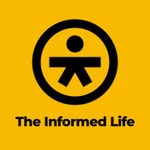Bright On Buddhism – Détails, épisodes et analyse
Détails du podcast
Informations techniques et générales issues du flux RSS du podcast.

Bright On Buddhism
Nicholas Bright Haight
Fréquence : 1 épisode/7j. Total Éps: 215

Classements récents
Dernières positions dans les classements Apple Podcasts et Spotify.
Apple Podcasts
🇫🇷 France - buddhism
30/07/2025#97🇺🇸 États-Unis - buddhism
29/07/2025#85🇫🇷 France - buddhism
29/07/2025#94🇺🇸 États-Unis - buddhism
28/07/2025#57🇫🇷 France - buddhism
28/07/2025#85🇫🇷 France - buddhism
27/07/2025#81🇫🇷 France - buddhism
26/07/2025#74🇫🇷 France - buddhism
25/07/2025#66🇩🇪 Allemagne - buddhism
24/07/2025#98🇫🇷 France - buddhism
24/07/2025#60
Spotify
Aucun classement récent disponible
Liens partagés entre épisodes et podcasts
Liens présents dans les descriptions d'épisodes et autres podcasts les utilisant également.
See all- https://openai.com/dall-e-2/
116 partages
- https://www.midjourney.com/home/
58 partages
- https://www.craiyon.com/
18 partages
- https://discord.gg/tEwcVpu
201 partages
- https://en.wikipedia.org/wiki/ISBN_
107 partages
- https://en.m.wikipedia.org/wiki/ISBN_
4 partages
Qualité et score du flux RSS
Évaluation technique de la qualité et de la structure du flux RSS.
See allScore global : 53%
Historique des publications
Répartition mensuelle des publications d'épisodes au fil des années.
Buddhish 16 - The Matrix as Buddhist
vendredi 13 septembre 2024 • Durée 01:16:34
Bright on Buddhism - Buddhish Episode 16 - The Matrix as Buddhist
Join us as we analyze the famous 1999 sci-fi movie The Matrix as containing Buddhist elements, allegories, and motifs.
Do you have a question about Buddhism that you'd like us to discuss? Let us know by tweeting to us @BrightBuddhism, emailing us at Bright.On.Buddhism@gmail.com, or joining us on our discord server, Hidden Sangha https://discord.gg/tEwcVpu!
Credits:
Nick Bright: Script, Cover Art, Music, Voice of Hearer, Co-Host
Proven Paradox: Editing, mixing and mastering, social media, Voice of Hermit, Co-Host
Do Buddhists reject the world?
Épisode 95
vendredi 6 septembre 2024 • Durée 21:10
Bright on Buddhism - Episode 95 - Do Buddhists reject the world? Do Buddhists believe that life is nothing but suffering? Are Buddhists fatalists or nihilists?
Resources: Davis, Bret W. 2004. "Zen After Zarathustra: The Problem of the Will in the Confrontation Between Nietzsche and Buddhism." Journal of Nietzsche Studies 28:89–138. p. 107.; Amaro, Ajahn (7 May 2015) [2008]. "A Dhamma article by Ajahn Amaro – The View from the Centre". Amaravati Buddhist Monastery. Archived from the original on 12 June 2018. Retrieved 24 June 2019.; Alagaddupama Sutta, The Middle Length Discourses of the Buddha (PDF). Translated by Nanamoli, Bikkhu; Bodhi, Bikkhu. Archived (PDF) from the original on 2015-09-26. Retrieved 2019-06-24.; https://www.accesstoinsight.org/tipitaka/dn/dn.02.0.than.html; Ñāṇamoli, Bhikkhu (trans.) and Bodhi, Bhikkhu (ed.) (2001). The Middle-Length Discourses of the Buddha: A Translation of the Majjhima Nikāya. Boston: Wisdom Publications. ISBN 0-86171-072-X.; Thanissaro Bhikkhu (trans.) (1997). Samaññaphala Sutta: The Fruits of the Contemplative Life (DN 2).; Walshe, Maurice O'Connell (trans.) (1995). The Long Discourses of the Buddha: A Translation of the Dīgha Nikāya. Somerville: Wisdom Publications. ISBN 0-86171-103-3.
Do you have a question about Buddhism that you'd like us to discuss? Let us know by tweeting to us @BrightBuddhism, emailing us at Bright.On.Buddhism@gmail.com, or joining us on our discord server, Hidden Sangha https://discord.gg/tEwcVpu!
Credits:
Nick Bright: Script, Cover Art, Music, Voice of Hearer, Co-Host
Proven Paradox: Editing, mixing and mastering, social media, Voice of Hermit, Co-Host
Asian Religions Series - Shintō Part 2
vendredi 5 juillet 2024 • Durée 25:11
Bright on Buddhism - Asian Religions Series - Shintō Part 2
Hello and welcome to the Asian religions series. In this series, we will be discussing religious traditions in Asia other than Buddhism. Buddhism never existed in a vacuum, and as it has spread all across East Asia, it has developed, localized, and syncretized with local traditions in fascinating and significant ways. As such, we cannot provide a complete picture of East Asian without discussing those local traditions such as they were and are. Disclaimer: this series is very basic and introductory, and does not and cannot paint a complete picture of these religious traditions as they are in the present or throughout history. Today, we will be discussing Shintō, a very historically and culturally significant religious tradition in Japan. We hope you enjoy
Resources: Azegami, Naoki (2012). Translated by Mark Teeuwen. "Local Shrines and the Creation of 'State Shinto'". Religion. 42 (1): 63–85. doi:10.1080/0048721X.2012.641806. S2CID 219597745.; Bocking, Brian (1997). A Popular Dictionary of Shinto (revised ed.). Richmond: Curzon. ISBN 978-0-7007-1051-5.; Boyd, James W.; Williams, Ron G. (2005). "Japanese Shinto: An Interpretation of a Priestly Perspective". Philosophy East and West. 55 (1): 33–63. doi:10.1353/pew.2004.0039. S2CID 144550475.; Breen, John; Teeuwen, Mark (2010). A New History of Shinto. Chichester: Wiley-Blackwell. ISBN 978-1-4051-5515-1.; Cali, Joseph; Dougill, John (2013). Shinto Shrines: A Guide to the Sacred Sites of Japan's Ancient Religion. Honolulu: University of Hawai'i Press. ISBN 978-0-8248-3713-6.; Earhart, H. Byron (2004). Japanese Religion: Unity and Diversity (fourth ed.). Belmont, CA: Wadsworth. ISBN 978-0-534-17694-5.; Hardacre, Helen (2017). Shinto: A History. Oxford: Oxford University Press. ISBN 978-0-19-062171-1.; Kenney, Elizabeth (2000). "Shinto Funerals in the Edo Period". Japanese Journal of Religious Studies. 27 (3/4): 239–271. JSTOR 30233666.; Kitagawa, Joseph M. (1987). On Understanding Japanese Religion. Princeton, New Jersey: Princeton University Press. ISBN 978-0-691-10229-0. ;Kuroda, Toshio (1981). Translated by James C. Dobbins and Suzanne Gay. "Shinto in the History of Japanese Religion". Journal of Japanese Studies. 7 (1): 1–21. doi:10.2307/132163. JSTOR 132163; Inoue, Nobutaka (2003). "Introduction: What is Shinto?". In Nobutaka Inoue (ed.). Shinto: A Short History. Translated by Mark Teeuwan and John Breen. London and New York: Routledge. pp. 1–10. ISBN 978-0-415-31913-3. Littleton, C. Scott (2002). Shinto: Origins, Rituals, Festivals, Spirits, Sacred Places. Oxford, NY: Oxford University Press. ISBN 978-0-19-521886-2. OCLC 49664424.; Offner, Clark B. (1979). "Shinto". In Norman Anderson (ed.). The World's Religions (fourth ed.). Leicester: Inter-Varsity Press. pp. 191–218.; Picken, Stuart D. B. (1994). Essentials of Shinto: An Analytical Guide to Principal Teachings. Westport and London: Greenwood. ISBN 978-0-313-26431-3.; Picken, Stuart D. B. (2011). Historical Dictionary of Shinto (second ed.). Lanham: Scarecrow Press. ISBN 978-0-8108-7172-4.; Williams, George; Bhar, Ann Marie B.; Marty, Martin E. (2004). Shinto (Religions of the World). Chelsea House. ISBN 978-0-7910-8097-9.
Do you have a question about Buddhism that you'd like us to discuss? Let us know by tweeting to us @BrightBuddhism, emailing us at Bright.On.Buddhism@gmail.com, or joining us on our discord server, Hidden Sangha https://discord.gg/tEwcVpu!
Credits:
Nick Bright: Script, Cover Art, Music, Voice of Hearer, Co-Host
Proven Paradox: Editing, mixing and mastering, social media, Voice of Hermit, Co-Host
Who is Sariputra?
Épisode 44
vendredi 28 octobre 2022 • Durée 31:09
Bright on Buddhism Episode 44 - Who is Sariputra? What role does he play in the texts? How does this role change over time?
Resources: Kevin Trainor: Buddhism: An Illustrated Guide; Donald Lopez: Norton Anthology of World Religions: Buddhism; Silk, Jonathan A. (2019), Brill's encyclopedia of Buddhism Vol Two, Hinüber, Oskar von,, Eltschinger, Vincent,, Bowring, Richard, 1947-, Radich, Michael, Leiden, ISBN 978-90-04-29937-5, OCLC 909251257; Robert E Buswell: Encyclopedia of Buddhism: Sariputra; Hecker, Hellmuth; Nyanaponika Thera (2003), Great Disciples of the Buddha: Their Lives, Their Works, Their Legacy (PDF), Simon and Schuster, ISBN 978-0-86171-381-3, archived from the original (PDF) on 2017-09-24; Bodhi, Bhikkhu; Dhamma, Rewata (1993), A comprehensive manual of Abhidhamma : the Abhidhammattha sangaha of Ācariya Anuruddha (1st BPS Pariyatti ed.), BPS Pariyatti Edition, ISBN 978-1-928706-02-1; Buswell, Robert E. Jr. (2004), Encyclopedia of Buddhism (PDF), New York, NY: Macmillan Reference, USA, ISBN 0-02-865718-7, archived (PDF) from the original on 2018-06-29, retrieved 2020-02-22; Buswell, Robert E. Jr.; Lopez, Donald S. Jr. (2013), Princeton Dictionary of Buddhism. (PDF), Princeton, NJ: Princeton University Press, ISBN 978-0-691-15786-3, archived (PDF) from the original on 2018-06-12, retrieved 2020-02-22; Carus, Paul (1905), "Ashvajit's Stanza and Its Significance", Open Court, 3 (6), archived from the original on 2020-10-27, retrieved 2020-02-22; Irons, Edward (2007), Encyclopedia of Buddhism (PDF), New York: Facts on File, ISBN 978-0-8160-5459-6, archived from the original (PDF) on 2017-05-17, retrieved 2020-02-22; Lopez, Donald S. (2016), The Lotus Sūtra : a biography, Princeton University Press, ISBN 978-0-691-15220-2; Shaw, Sarah (2013), "Character, Disposition, and the Qualities of the Arahats as a Means of Communicating Buddhist Philosophy in the Suttas" (PDF), in Emmanuel, Steven M. (ed.), A companion to Buddhist philosophy (first ed.), Chichester, West Sussex: Wiley-Blackwell, ISBN 978-0-470-65877-2, archived (PDF) from the original on 2017-08-28, retrieved 2020-02-22; Bodhi, Bhikkhu (trans.) (2009). Right View. A translation of the Sammādiṭṭhi Sutta. Attributed to Sariputra
Do you have a question about Buddhism that you'd like us to discuss? Let us know by finding us on email or social media! https://linktr.ee/brightonbuddhism
Credits:
Nick Bright: Script, Cover Art, Music, Voice of Hearer, Co-Host
Proven Paradox: Editing, mixing and mastering, social media, Voice of Hermit, Co-Host
What were the 4 major persecutions of Buddhism in Chinese history?
Épisode 43
vendredi 21 octobre 2022 • Durée 20:31
Bright on Buddhism Episode 43 - What were the 4 major persecutions of Buddhism in Chinese history? Why did they happen? What were their historical effects?
Resources: Spence, Jonathan D. 2013. The Search for Modern China. New York, W.W. Norton & Company.
; Ebrey Patricia Buckley. 1999. The Cambridge Illustrated History of China 1St pbk. ed. Cambridge: Cambridge University Press.; Chan, Wing-tsit, Ron Guey Chu, John Dardess, Edward Farmer, Leon Hurvitz, David N. Keightley, Richard John Lynn, et al. Sources of Chinese Tradition: Volume 1: From Earliest Times to 1600. Edited by Wm. Theodore de Bary and Irene Bloom. 2nd ed. Columbia University Press, 1999. http://www.jstor.org/stable/10.7312/deba10938.; Keay John. 2009. China : A History. New York: Basic Books a member of the Perseus Books Group.; Fairbank John King and Merle Goldman. 2015. China : A New History (version 2nd enl. ed) 2Nd enl. ed. Vancouver B.C: Langara College. http://caperbc.ca/requests/request-form/.; Schirokauer Conrad and Miranda Brown. 2013. A Brief History of Chinese Civilization (version 4th ed). 4th ed. Boston MA: Wadsworth Cengage Learning. https://archive.org/details/briefhistoryofch0000schi_o2l2.; Yu Yingshi Josephine Chiu-Duke and Michael S Duke. 2016. Chinese History and Culture. Volume 1 Sixth Century B.c.e. to Seventeenth Century. New York: Columbia University Press. https://doi.org/10.7312/yu--17858.
Do you have a question about Buddhism that you'd like us to discuss? Let us know by finding us on email or social media! https://linktr.ee/brightonbuddhism
Credits:
Nick Bright: Script, Cover Art, Music, Voice of Hearer, Co-Host
Proven Paradox: Editing, mixing and mastering, social media, Voice of Hermit, Co-Host
What are the 8 jhanas in Buddhism?
Épisode 42
vendredi 14 octobre 2022 • Durée 23:05
Bright on Buddhism Episode 42 - What are the 4 rupajhanas? What are the 4 arupajhanas? How do they function in the context of meditation?
Resources: Kevin Trainor: Buddhism: An Illustrated Guide; Donald Lopez: Norton Anthology of World Religions: Buddhism; Chan Master Sheng Yen: Orthodox Chinese Buddhism; Robert E Buswell: Encyclopedia of Buddhism: Zen; Dhyana; Jhana; Arbel, Keren (2017), Early Buddhist Meditation: The Four Jhanas as the Actualization of Insight, Routledge, doi:10.4324/9781315676043, ISBN 9781317383994; Bronkhorst, Johannes (1993), The Two Traditions Of Meditation In Ancient India, Motilal Banarsidass Publ.; Bucknell, Robert S. (1993), "Reinterpreting the Jhanas", Journal of the International Association of Buddhist Studies, 16 (2); Gethin, Rupert (1992), The Buddhist Path to Awakening, OneWorld Publications; Gethin, Rupert (2004), "On the Practice of Buddhist Meditation According to the Pali Nikayas and Exegetical Sources", Buddhismus in Geschichte und Gegenwart, 9: 201–21; Lusthaus, Dan (2002), Buddhist Phenomenology: A Philosophical Investigation of Yogacara Buddhism and the Ch'eng Wei-shih Lun, Routledge; Stuart-Fox, Martin (1989), "Jhana and Buddhist Scholasticism", Journal of the International Association of Buddhist Studies, 12 (2); Henepola Gunaratana, Jhanas in Theravada Buddhist Meditation; Ajahn Brahmavamso, Travelogue to the four Jhanas; Ajahn Brahmavamso, The Jhanas; Thanissaro Bhikkhu, Jhana not by the numbers; Bhante Vimalaramsi Mahāthera, MN 111 One by One as They Occurred – Anupada Sutta. Dhamma-Talks on the Anupada-Sutta. This provides a highly detailed account of the progression through the jhānas.; Sutta-style jhanas: a western phenomenon?, Dhamma Wheel; Nagarjuna, Commentary in the Four Dhyanas; Leigh Breighton, Interpretations of the Jhanas
Do you have a question about Buddhism that you'd like us to discuss? Let us know by finding us on email or social media! https://linktr.ee/brightonbuddhism
Credits:
Nick Bright: Script, Cover Art, Music, Voice of Hearer, Co-Host
Proven Paradox: Editing, mixing and mastering, social media, Voice of Hermit, Co-Host
Kōan Series - Show me your original face
vendredi 7 octobre 2022 • Durée 22:38
Bright on Buddhism - Kōan Series Episode 3 - Huìnéng asked Hui Ming, "Without thinking of good or evil, show me your original face before your mother and father were born."
Hello and welcome to a new type of episode of Bright on Buddhism, called the Kōan Series. In this series, we will read and discuss real Buddhist kōans to try and better understand them. We hope you enjoy.
Resources:
Episode 6 - https://anchor.fm/brightonbuddhism/episodes/What-is-non-attachment-and-the-Middle-Way-e17gp0u
Episode 10 - https://anchor.fm/brightonbuddhism/episodes/What-is-Zen-Buddhism-e1a2sm2
Episode 18 - https://anchor.fm/brightonbuddhism/episodes/What-is-the-Buddhist-philosophy-of-speech--language--and-words-e1dgqu9
Episode 32 - https://anchor.fm/brightonbuddhism/episodes/What-are-kans-e1j5scl
Episode 33 - https://anchor.fm/brightonbuddhism/episodes/What-is-emptiness-e1jc31i
Hori, Victor Sogen (1999). "Translating the Zen Phrase Book" (PDF). Nanzan Bulletin (23).
Hori, Victor Sogen (2000), Koan and Kensho in the Rinzai Zen Curriculum. In: Steven Heine and Dale S. Wright (eds)(2000): "The Koan. Texts and Contexts in Zen Buddhism, Oxford: Oxford University Press
Shimomissé, Eiichi (1998), THE GATELESS GATE
Heine, Steven (2008), Zen Skin, Zen Marrow
McRae, John (2000), The Platform Sutra of the Sixth Patriarch. Translated from the Chinese of Zongbao (PDF), Berkeley: Numata Center for Buddhist Translation and Research
Bielefeldt, Carl (2009), "Expedient Devices, the One Vehicle, and the Life Span of the Buddha", in Teiser, Stephen F.; Stone, Jacqueline I. (eds.), Readings of the Lotus Sutra, New York: Columbia University Press, ISBN 9780231142885
Kotatsu, Fujita; Hurvitz, Leon (1975), "One Vehicle or Three", Journal of Indian Philosophy, 3 (1/2): 79–166
Lopez, Donald (2016), The Lotus Sutra: A Biography (Kindle ed.), Princeton University Press, ISBN 978-0691152202
Lopez, Donald S.; Stone, Jacqueline I. (2019), Two Buddhas Seated Side by Side: A Guide to the Lotus Sūtra, Princeton University Press
Pye, Michael (2003), Skilful Means – A concept in Mahayana Buddhism, Routledge, ISBN 0203503791
Watson, Burton (tr.) (1993), The Lotus Sutra, Columbia University Press, ISBN 023108160X
Patrick Olivelle, trans. Life of the Buddha. Clay Sanskrit Library, 2008. 1 vols. (Cantos 1-14 in Sanskrit and English with summary of the Chinese cantos not available in the Sanskrit)
Stone, Jacqueline Ilyse (2003), "Original enlightenment and the transformation of medieval Japanese Buddhism" (PDF), Studies in East Asian Buddhism, University of Hawaii Press (12), ISBN 978-0-8248-2771-7, archived from the original (PDF) on November 5, 2013
Hakeda, Yoshito S., trans. (1967), Awakening of Faith—Attributed to Aśvaghoṣa, with commentary by Yoshito S. Hakeda, New York, NY: Columbia University Press, ISBN 0-231-08336-X
Jorgensen, John; Lusthaus, Dan; Makeham, John; Strange, Mark, trans. (2019), Treatise on Awakening Mahāyāna Faith, New York, NY: Oxford University Press, ISBN 9780190297718
Do you have a question about Buddhism that you'd like us to discuss? Let us know by finding us on email or social media! https://linktr.ee/brightonbuddhism
Credits:
Nick Bright: Script, Cover Art, Music, Voice of Hearer, Co-Host
Proven Paradox: Editing, mixing and mastering, social media, Voice of Hermit, Co-Host
What is dependent origination?
Épisode 41
vendredi 30 septembre 2022 • Durée 24:31
Bright on Buddhism Episode 41 - What is dependent origination? What are the doctrinal implications of it? How does understanding it lead to enlightenment?
Resources: Boisvert, Mathieu (1995), The Five Aggregates: Understanding Theravada Psychology and Soteriology, Wilfrid Laurier University Press, ISBN 978-0-88920-257-3; Buddhaghosa (2010), The Path of Purification (Visuddhimagga), translated by Bhikkhu Ñāṇamoli (4th ed.), Kandy, Sri Lanka: Buddhist Publication Society, ISBN 978-955-24-0023-0; Dalai Lama (1992), The Meaning of Life, translated and edited by Jeffrey Hopkins, Wisdom; Garfield, Jay L. (1994), Dependent Arising and the Emptiness of Emptiness: Why did Nagarjuna start with Causation?, Philosophy East and West, Volume 44, Number 2 April 1994, archived from the original on 7 May 2010, retrieved 3 September 2012; Geshe Sonam Rinchen (2006), How Karma Works: The Twelve Links of Dependent Arising, Snow Lion; Gethin, Rupert (1998), Foundations of Buddhism, Oxford University Press, ISBN 978-0-19-289223-2; Williams, Paul (2002), Buddhist Thought, Taylor & Francis, Kindle Edition; Schumann, Hans Wolfgang (1997) [1976], Boeddhisme. Stichter, scholen, systemen (Buddhismus - Stifter, Schulen und Systemen), Asoka; Shulman, Eviatar (2008), "Early Meanings of Dependent-Origination" (PDF), Journal of Indian Philosophy, 36 (2): 297–317, doi:10.1007/s10781-007-9030-8, S2CID 59132368; Kevin Trainor: Buddhism: An Illustrated Guide; Donald Lopez: Norton Anthology of World Religions: Buddhism; Robert E Buswell: Encyclopedia of Buddhism
Do you have a question about Buddhism that you'd like us to discuss? Let us know by finding us on email or social media! https://linktr.ee/brightonbuddhism
Credits:
Nick Bright: Script, Cover Art, Music, Voice of Hearer, Co-Host
Proven Paradox: Editing, mixing and mastering, social media, Voice of Hermit, Co-Host
What is Buddhist psychology?
Épisode 40
vendredi 23 septembre 2022 • Durée 21:54
Bright on Buddhism Episode 40 - What is Buddhist psychology? What are its doctrinal foundations? What is its influence in the West?
Resources: Caroline Brazier: A Buddhist Perspective On Mental Health. Paper for Nurturing Heart and Spirit: A National Multi-Faith Symposium; Held under the auspices of the Nimhe Spirituality Project, Staffordshire University and The Spirituality and Mental Health Forum, Wednesday November 1st 2006; Davidson, Richard J. & Anne Harrington (eds.) (2002). Visions of Compassion: Western Scientists and Tibetan Buddhists Examine Human Nature. NY: Oxford University Press. ISBN 0-19-513043-X.; Dockett, K. H., Dudley-Grant, G. R., & Bankart, C. P. (2003). Psychology and Buddhism: From individual to global community: Springer Science & Business Media.; Epstein, Mark (2004), Thoughts Without A Thinker: Psychotherapy from a Buddhist Perspective, Basic Books, Kindle Edition; Fromm, Erich, D. T. Suzuki & Richard De Martino (1960). Zen Buddhism and Psychoanalysis. NY: Harper & Row. ISBN 0-06-090175-6.; Fromm, Erich (1989, 2002). The Art of Being. NY: Continuum. ISBN 0-8264-0673-4.; Goleman, Daniel (ed.) (1997). Healing Emotions: Conversations With the Dalai Lama on Mindfulness, Emotions, and Health. Boston: Shambhala Publications. ISBN 1-57062-212-4.; Goleman, Daniel (2004). Destructive Emotions: A Scientific Dialogue with the Dalai Lama. NY: Bantam Dell. ISBN 0-553-38105-9.; Virtbauer, Gerald (March 2012). "The Western reception of Buddhism as a psychological and ethical system: developments, dialogues, and perspectives". Mental Health, Religion & Culture. 15 (3): 251–263. doi:10.1080/13674676.2011.569928. S2CID 145760146.; Virtbauer, Gerald (1 April 2014). "Characteristics of Buddhist Psychology". SFU Forschungsbulletin: 1–9. doi:10.15135/2014.2.1.1-9.; Wallace, B. A., & Shapiro, S. L. (2006). Mental balance and well-being: building bridges between Buddhism and Western psychology. American psychologist, 61(7), 690.; Watts, Alan W. (1959). The Way of Zen. NY: New American Library. Cited in Ellis (1991).; Watts, Alan W. (1960). Nature, Man and Sex. NY: New American Library. Cited in Ellis (1991).; Watts, Alan W. (1961, 1975). Psychotherapy East and West. NY: Random House. ISBN 0-394-71610-8.; Bodhi, Bhikkhu (ed.) (2000). A Comprehensive Manual of Abhidhamma: The Abhidhammattha Sangaha of Ācariya Anuruddha. Seattle, WA: BPS Pariyatti Editions. ISBN 1-928706-02-9. - also online: http://www.accesstoinsight.org/lib/authors/bodhi/abhiman.html; Brazier, David (2001), The Feeling Buddha, Robinson Publishing; Curtis, C. (2016). The Experience of Self/No-Self in Aikido. Journal of Consciousness Studies, 23(1-2), 58–68.; Flanagan, Owen (2011-08-12). The Bodhisattva's Brain: Buddhism Naturalized. MIT Press. p. 107. ISBN 978-0-262-29723-3.; Rick Hanson: Buddha's Brain: The Practical Neuroscience of Happiness, Love, and Wisdom. New Harbinger Publications (2009); Stephen Batchelor: After Buddhism: Rethinking the Dharma for a Secular Age. Yale University Press (2017)
Do you have a question about Buddhism that you'd like us to discuss? Let us know by finding us on email or social media! https://linktr.ee/brightonbuddhism
Credits:
Nick Bright: Script, Cover Art, Music, Voice of Hearer, Co-Host
Proven Paradox: Editing, mixing and mastering, social media, Voice of Hermit, Co-Host
Mahaparinibbana Sutta Part 2 - Chapters 3 and 4
vendredi 16 septembre 2022 • Durée 01:41:24
The Mahaparinibbana Sutta - Join us as we read and discuss the Mahaparinibbana Sutta
Resources: https://www.accesstoinsight.org/tipitaka/dn/dn.16.1-6.vaji.html; https://suttacentral.net/dn16/?view=normal; Blum, Mark. “Death.” In Encyclopedia of Buddhism. Vol. 1. Edited by Robert E. Buswell Jr., (New York: Macmillan Reference USA, 2004), pp. 203-210.; Cuevas, Bryan J., and Jacqueline Stone, eds.The Buddhist Dead: Practices, Discourses and Representations, (Honolulu: University of Hawaii Press, 2007); Walshe, Maurice, trans. “The Great Passing,” (Mahaparinibbana Sutta), in Thus Have I Heard. The Long Discourses of the Buddha (Digha Nikaya), 231-277 Strong, John. “The Buddha’s Funeral,” In The Buddhist Dead: Practices, Discourses and Representations, (Honolulu: University of Hawaii Press, 2007), pp. 32-59. Reference: Bechert, Heinz. "Buddha, Life of the." In Encyclopedia of Buddhism, edited by Robert E. Buswell, Jr., Vol. 1. (New York: Macmillan Reference USA, 2004), pp. 82-88.; Jacqueline Stone, Right Thoughts at the Last Moment, (Honolulu: University of Hawaii Press, 2016); Mariko Namba. “The Structure of Japanese Buddhist Funerals.” In Death and the Afterlife in Japanese Buddhism. (Honolulu: University of Hawaii Press, 2009), pp. 247-285;
Do you have a question about Buddhism that you'd like us to discuss? Let us know by finding us on email or social media! https://linktr.ee/brightonbuddhism
Credits:
Nick Bright: Script, Cover Art, Music, Voice of Hearer, Co-Host
Proven Paradox: Editing, mixing and mastering, social media, Voice of Hermit, Co-Host









